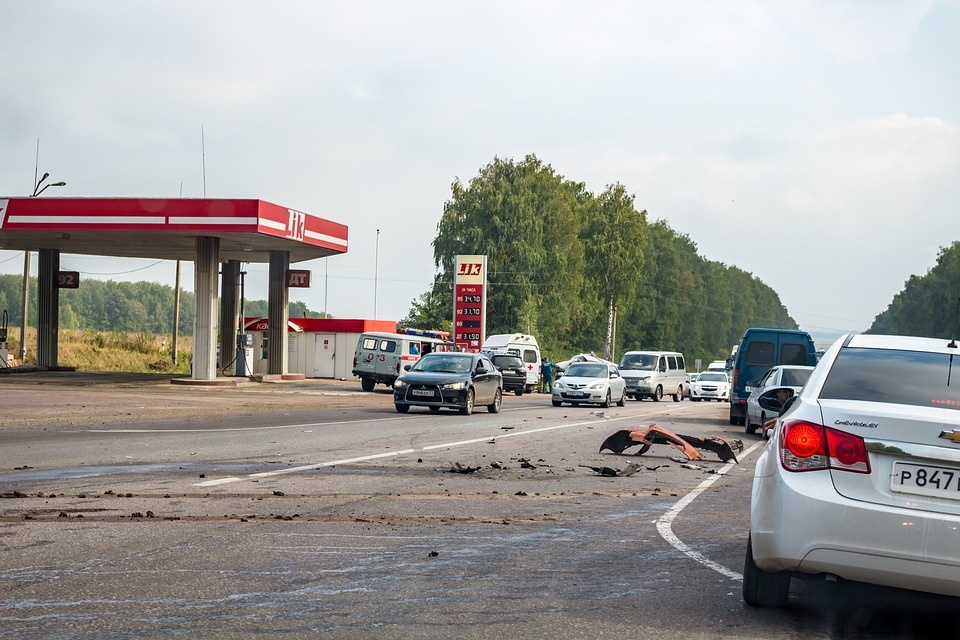There are some cases where you can tell who is at fault in an accident pretty easily. For example, sometimes you can tell by looking at the damage to the car.
This is something investigators will often rely on.
As an example, if there’s severe damage, it can show the crash was high impact. That means someone was likely speeding. That doesn’t tell who’s at fault in and of itself, but it plays a role.
Of course, if there’s damage to the rear of a car, it likely means the driver behind you was at-fault.
If you hit someone from behind, what should you know?
No-Doubt Liability
There is a legal concept called no-doubt liability. In these certain kinds of accidents, the other driver is at-fault nearly 100% of the time, meaning an insurance company probably isn’t even going to argue it.
Of course, if the situation is reversed, and you’re in a no-doubt liability situation, and you caused the accident, it’s not great for you.
A rear-end collision is a prime example of no-doubt liability.
There’s a basic rule of driving that means that you need to be able to stop safely if the traffic ahead of you stops, no matter why the traffic is stopping.
If you can’t stop safely, then you are considered to be driving less safely than the person in front of you.
Of course, the vehicle damage is another part of this that makes it a sure situation from the perspective of insurance companies. If the back of the car is damaged, there’s little question as to who hit who.
With that being said, if you have been rear-ended there are situations where your compensation could be reduced because of your carelessness under the rule of comparative negligence. There’s not a comparative negligence rule in every state.
If you do have comparative negligence in your state, then your compensation might be reduced if your tail lights were out, for example.
Left-turn accidents are another example of a situation with no-doubt liability. The only exceptions might be if the car going straight went through a red light, or the car going straight was speeding significantly.
Otherwise, if a car is making a left turn, it’s almost always liable if in a crash with a car coming straight in the opposite direction.
What to Do If You Rear-End Someone
If you are in an accident and you’ve rear-ended someone, you should try to calm down, don’t panic, and definitely don’t flee the scene.
After checking for injuries, call the police and tell them there’s been an accident.
Take pictures of the vehicles, their position, and any surroundings.
Get a copy of your accident report.
Who Pays If You Rear-End Someone?
If you live, for example, in New York, and you rear-end someone you as the rear vehicle are liable. There is something in New York called the rebuttable presumption which is a factor. This says that if a stopped car is hit from the back by another vehicle, the one in back is responsible for the collision.
As such, there’s a presumption the driver in the rear was negligent, so they are financially responsible for the damages.
Even so, the rebuttal component indicates in limited scenarios this may not be the case.
For example, you might be able to show a non-negligent collision. If you can prove there was an unforeseeable situation that made you rear-end the other car, you may not be liable. An example would be a car swerving into your lane unexpectedly.
A car slamming on its brakes wouldn’t qualify under this situation, though, because you should be far enough from the car in front of you that you’re able to stop.
If you’re in a multi-car pileup, then the most rear driver tends to be presumed liable for damages.
What If You’re Rear-Ended?
The steps you should take if you’re rear-ended are similar to what you should do if someone rear-ends you.
First, stay calm. Check for injuries and then once you’ve done that, call the police and tell them there’s been an accident.
Take pictures of the scene and the position of the involved vehicles.
Get a copy of the police report and call your insurance company.
The other driver’s insurance should pay for damages, but your coverage might kick in as well. For example, if you live in a no-fault state, your personal injury protection coverage should apply to you being rear-ended.

